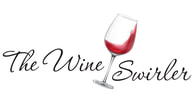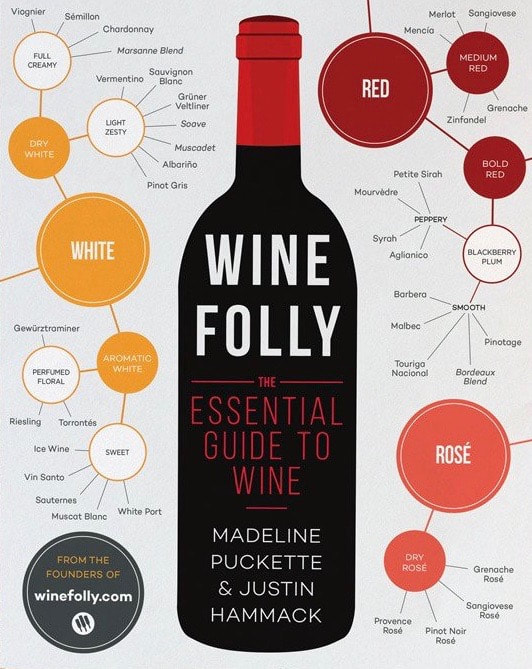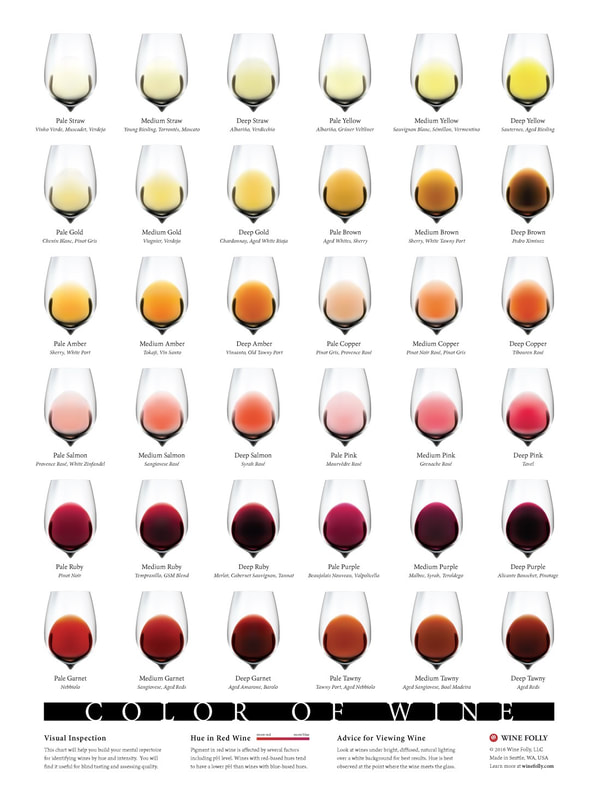The Systematic Approach to Wine Tasting
Organizing Your Tasting Notes
One of the biggest challenges I had when I first started studying wine was how to taste and evaluate. Of course, I had plenty of experience drinking wine and most of the time knew if I had a good bottle of wine, but I didn't know why it was a good bottle of wine. One of the most rewarding parts of WSET2 was that it taught be how to taste and evaluate wine. There's not a blind tasting test for the level 2 certificate, but there definitely is one for level 3. Tasting and evaluating are more challenging for level 3 since there's a big jump in the amount of criteria you have to learn, especially when it comes to primary, secondary and tertiary aromas/flavors.
The most important advice I can offer is to practice, practice, practice! Taste as many different varieties and styles of wine as possible. When I have a glass of wine, whether I'm at a restaurant, at a shop tasting, or at home, I take a few minutes to evaluate it and take down some notes. I even carry a set of tasting notes with me in my purse...you never know when you'll come across a chance to have a glass of wine. In the beginning, I wrote down my own notes, but after a month, it was too difficult to organize them into categories and keep track of my tastings. I then came up with my own stylized evaluation note taking system. Based on WSET's categories, I made up my own template that would only require me to circle my criteria. Such a time saver! Basically, I print out the double-sided template, cut it up, and staple 15-20 sheets into "tasting notebooks." When I do a tasting, I can take down my notes fairly easily and then snap a photo of the wine label. You can download and use my tasting sheets below!
One of the biggest challenges I had when I first started studying wine was how to taste and evaluate. Of course, I had plenty of experience drinking wine and most of the time knew if I had a good bottle of wine, but I didn't know why it was a good bottle of wine. One of the most rewarding parts of WSET2 was that it taught be how to taste and evaluate wine. There's not a blind tasting test for the level 2 certificate, but there definitely is one for level 3. Tasting and evaluating are more challenging for level 3 since there's a big jump in the amount of criteria you have to learn, especially when it comes to primary, secondary and tertiary aromas/flavors.
The most important advice I can offer is to practice, practice, practice! Taste as many different varieties and styles of wine as possible. When I have a glass of wine, whether I'm at a restaurant, at a shop tasting, or at home, I take a few minutes to evaluate it and take down some notes. I even carry a set of tasting notes with me in my purse...you never know when you'll come across a chance to have a glass of wine. In the beginning, I wrote down my own notes, but after a month, it was too difficult to organize them into categories and keep track of my tastings. I then came up with my own stylized evaluation note taking system. Based on WSET's categories, I made up my own template that would only require me to circle my criteria. Such a time saver! Basically, I print out the double-sided template, cut it up, and staple 15-20 sheets into "tasting notebooks." When I do a tasting, I can take down my notes fairly easily and then snap a photo of the wine label. You can download and use my tasting sheets below!
Your browser does not support viewing this document. Click here to download the document.
Identifying Aromas and Flavors
I've found that all the tips WSET gives you to test appearance, nose and palate are very useful. Nevertheless, identifying aromas and flavors is a whole different story, especially if you've never comes across some of the aromas and flavors. For example, the first time I ever came across quince was just this year in Melbourne when it came with a cheese plate as a type of jelly. Quince, by the way, is a tart Asian apple that is often made into aromatic jellies and jams. Anyways, I found Wine Folly to be an incredibly useful source in helping me to identify aromas and flavors. The book list the aromas/flavor profiles for all of the wines covered in WSET2 and almost all of the wines in WSET3. When I do tastings at home, I turn to the profile of the wine I was tasting and read through all the possible aromas/flavors for the wine. I then smell and taste the wine to see how many of the aromas/flavors I can match to the ones in the book. What I really like about Wine Folly is that it points out the different profiles you'll come across for a variety in a cool, moderate and warm climate. I also often use the Wine Folly color descriptors since they offer more nuance than the WSET ones.
When I do tastings at my local wine shop, I try my best to get as many aromas and flavors as possible. When I get home, I check them against the Wine Folly profiles, and add any that I might've missed or couldn't recall at the wine shop. I've found that doing this again and again has been a great help in building my "wine memory."
I've found that all the tips WSET gives you to test appearance, nose and palate are very useful. Nevertheless, identifying aromas and flavors is a whole different story, especially if you've never comes across some of the aromas and flavors. For example, the first time I ever came across quince was just this year in Melbourne when it came with a cheese plate as a type of jelly. Quince, by the way, is a tart Asian apple that is often made into aromatic jellies and jams. Anyways, I found Wine Folly to be an incredibly useful source in helping me to identify aromas and flavors. The book list the aromas/flavor profiles for all of the wines covered in WSET2 and almost all of the wines in WSET3. When I do tastings at home, I turn to the profile of the wine I was tasting and read through all the possible aromas/flavors for the wine. I then smell and taste the wine to see how many of the aromas/flavors I can match to the ones in the book. What I really like about Wine Folly is that it points out the different profiles you'll come across for a variety in a cool, moderate and warm climate. I also often use the Wine Folly color descriptors since they offer more nuance than the WSET ones.
When I do tastings at my local wine shop, I try my best to get as many aromas and flavors as possible. When I get home, I check them against the Wine Folly profiles, and add any that I might've missed or couldn't recall at the wine shop. I've found that doing this again and again has been a great help in building my "wine memory."



